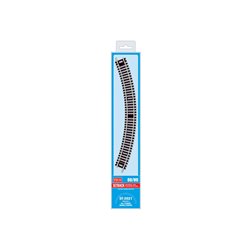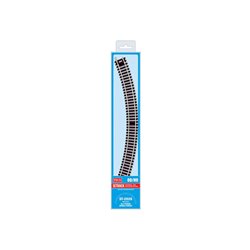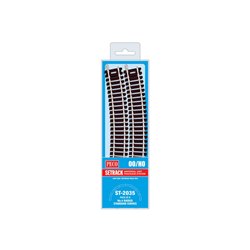Static grass puffer bottles work by manually charging model grass fibres with static electricity. When the charged...
Cart 0 Product Products (empty)
No products
Free shipping! Shipping
£ 0.00 Total
Product successfully added to your shopping cart
Quantity
Total
There are 0 items in your cart. There is 1 item in your cart.
Total products (tax incl.)
Total shipping (tax excl.) Free shipping!
Total (tax incl.)
Search Tips
Is it worthwhile adding a camber to curved track?
In real life, curved track sections often have cambers built into them to allow trains to traverse bends quicker without creating ware to rolling stock wheels or the outer rail.
Whether or not you add such cambers to your model railway comes down to personal preference. There is no practical advantage of installing one as the scaled-down speed of model trains is too slow to require assistance, and certainly, the weight of a real train doesn't get scaled down to their model equivalents.
Some modellers do choose to install cambers on bends but this is done purely for visual effect. If you are thinking of installing some cambers on your layout, you should first consider that the height of camber on a real railway usually falls below 150 mm and when scaled down prototypically will be hardly visible. That means you would have to elevate your track to a height that far exceeds the permitted real-life maximum and you risk derailments, so be careful how far you take it.
Posted in: Model Railway
Click here to receive the tips weekly in your mailbox. You can unsubscribe at any time.










